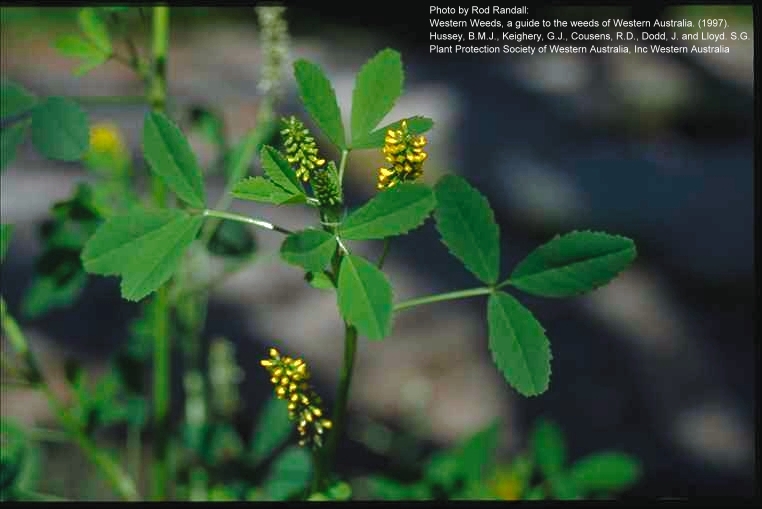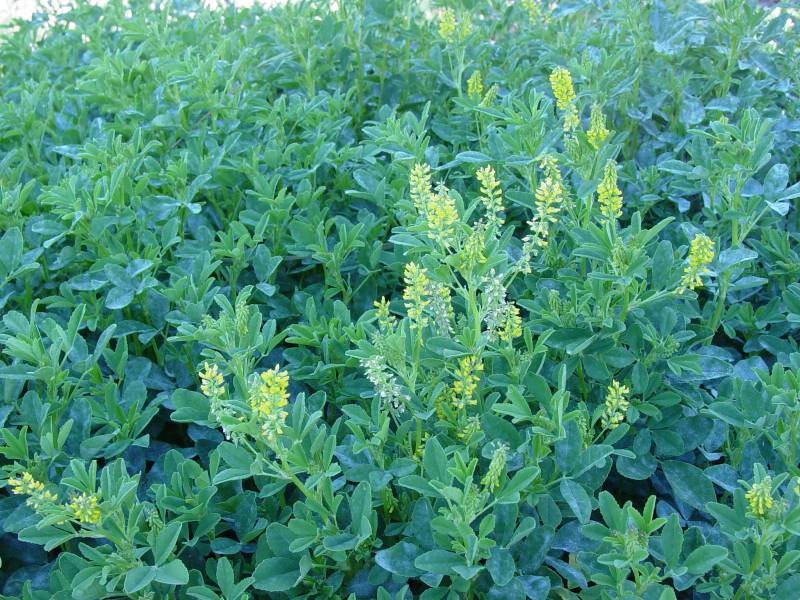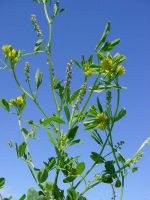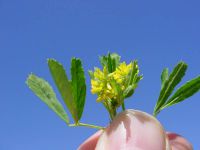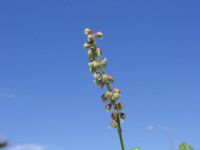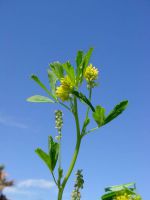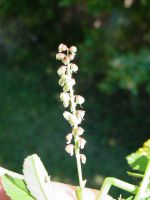Distribution: Occurring west of the Cascades crest in Washington; British Columbia to California, east to Idaho, Utah, and Nevada, further east across the southern U.S. and in eastern North America.
Habitat: Roadsides, fields, wastelots, and other disturbed open areas.
Flowers: May-July
Origin: Introduced from Eurasia
Growth Duration: Annual
Conservation Status: Not of concern
Pollination: Generalist
Glabrous annual or biennial, the stem up to 1 m. tall, branched above.
Leaves trifoliate, leaflets lanceolate, serrulate only on the upper half.
Inflorescence of several elongate, spike-like racemes 2-8 cm. long arising in the leaf axils, with small, linear bracts; flowers small, pea-like, yellow, 2-3 mm. long; calyx teeth 5, equal, oblong-lanceolate, obtuse.
Pod 2-2.5 mm. long.
Publication: Fl. Pedem. 1: 308. 1785.
PNW Herbaria: Specimen records of Melilotus indicus in the Consortium of Pacific Northwest Herbaria database.
WA Flora Checklist: Melilotus indicus checklist entry.
OregonFlora: Melilotus indicus information.
E-Flora BC: Melilotus indicus atlas page.
CalPhotos: Melilotus indicus photos.
USDA Plants: Melilotus indicus information.

